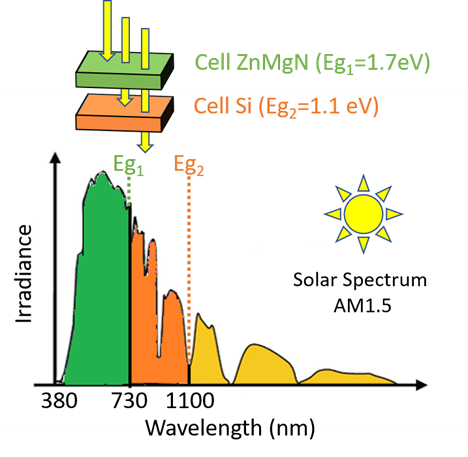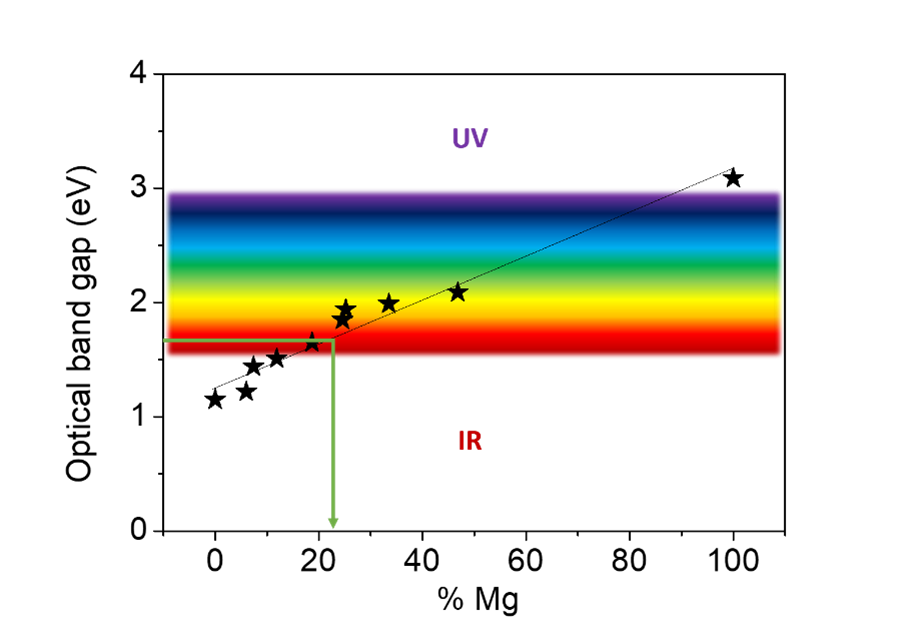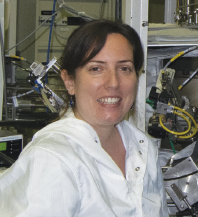Academy of Excellence "Space, Environment, Risk and Resilience"
NAFTA - New nitride alloy for tandem solar cells
The increasing demand for energy implies the development of new technologies, preferably in the renewable field, but these technologies should be earth-friendly and use abundant elements.
Academy Highlight
The NAFTA project is directly related to the topic “Environmental challenges related to energy and resources” as its main objective is to develop a top cell based on indium-free, earth-abundant and non-toxic nitride, namely the (Zn1 – xMgx)3N2 alloy compatible with the c-Si technology used in tandem solar cells.
The project


The +
The (Zn1 – xMgx)3N2 alloy, composed of earth-abundant and non-toxic elements, has an optical band gap that can be adjusted from 1 eV to 2.9 eV depending on the Mg content. This allows it to achieve the ideal band gap of 1.7 eV, and easily be combined as a top cell with a c-Si cell in a tandem solar cell using the molecular beam epitaxy growth method.
What's next ?
The project will continue thanks to ANR funding (ANR NITA) under the name: Earth-abundant Nitride for tandem solar cells. The future of the project will be to have a strong societal impact through the development of a low-cost green energy source that enable to reduce dependency on fossil fuels currently used.
Project informations
| Scientific field: Materials Sciences Energy |
Keywords: Nanotechnologies Sustainable energy Tandem solar cells Earth-abundant element-based material |
| Project member: Hélène Rotella |
Budget: €3,600 from Academy 3 |
| Student involved: Oumaima Meskini (M2) |
Partner laboratory:
|


















